TABLE OF CONTENTS
What are the differences between skillets and pans? Which one is the best choice for your cooking? So, you have confusion between skillet vs pan. You do not know which one can support your cooking needs. We understand your confusion. We will discuss both of these types. After going through this article, you can decide without any confusion.
When it comes to the pan, it is a generic term. We use it for a set of cookware. However, the skillet is a frying pan. You can say that skillet is a pan with some distinct features.
Yes, you might not be able to differentiate between a skillet and a pan without a proper understanding. You will find the material, size, and some other features the same.
What is the difference? How can we differentiate them? Yes, a lot of confusion is there. Let’s get into details.
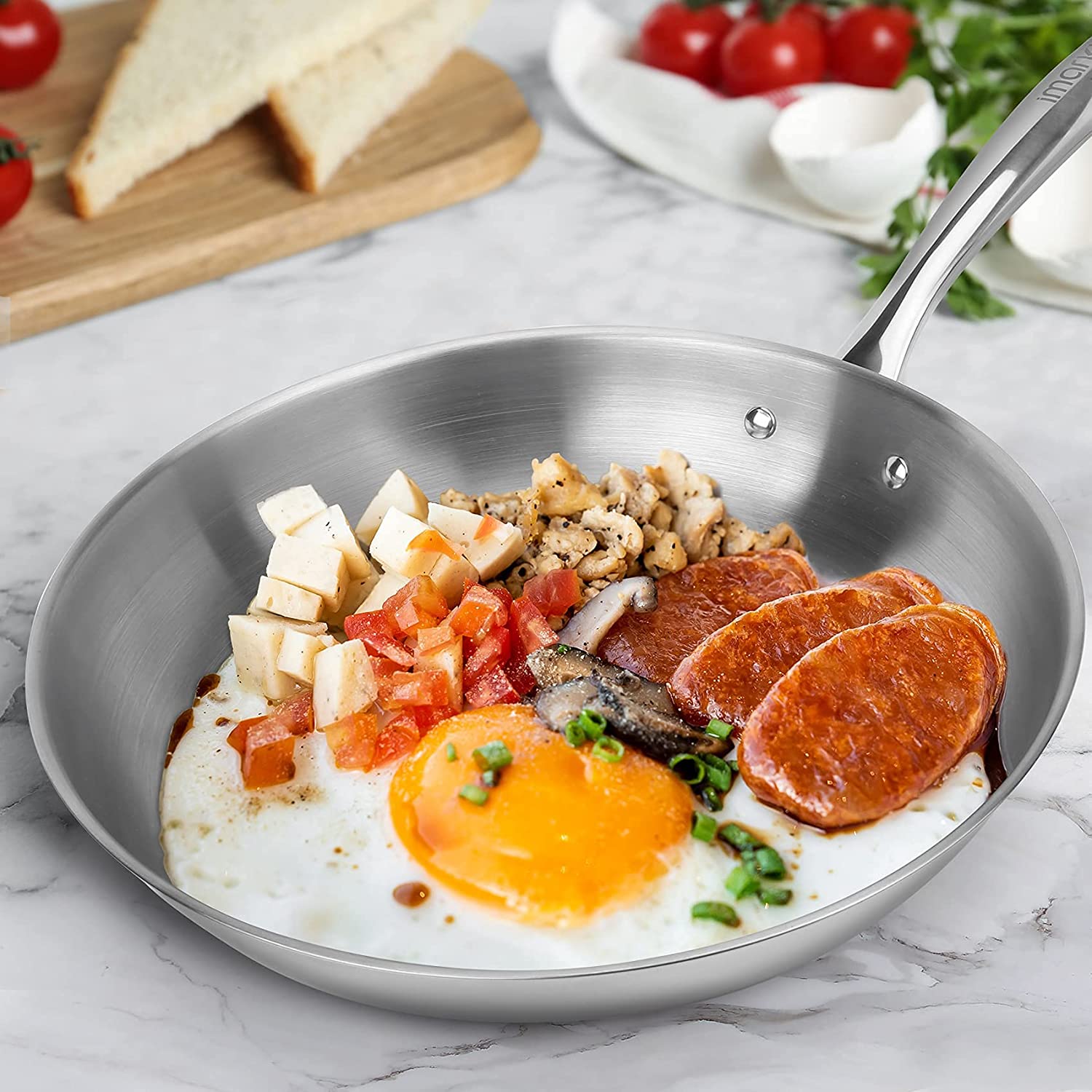
Skillets vs. Pans: Why the Confusion?
You might not find much difference except their names. We call some cookware skillets and others pans. Also, we use the skillet term for the cast iron pans. Is it the only difference? No, there are many.
Pans are a broad concept, and they include different types of pans. We can take the example of sauté pans or other cooking vessels. We use pans and pots for general cookware. You can also use the pan term to describe roasting pan, sheet pan, crepe pan, and similar cookware.
Also, both pans and skillets are available in the same size and material. They use multi-ply, aluminum, stainless steel, and nonstick coating. Hence, you can get confused easily. However, you can differentiate them if you know the unique qualities of each.
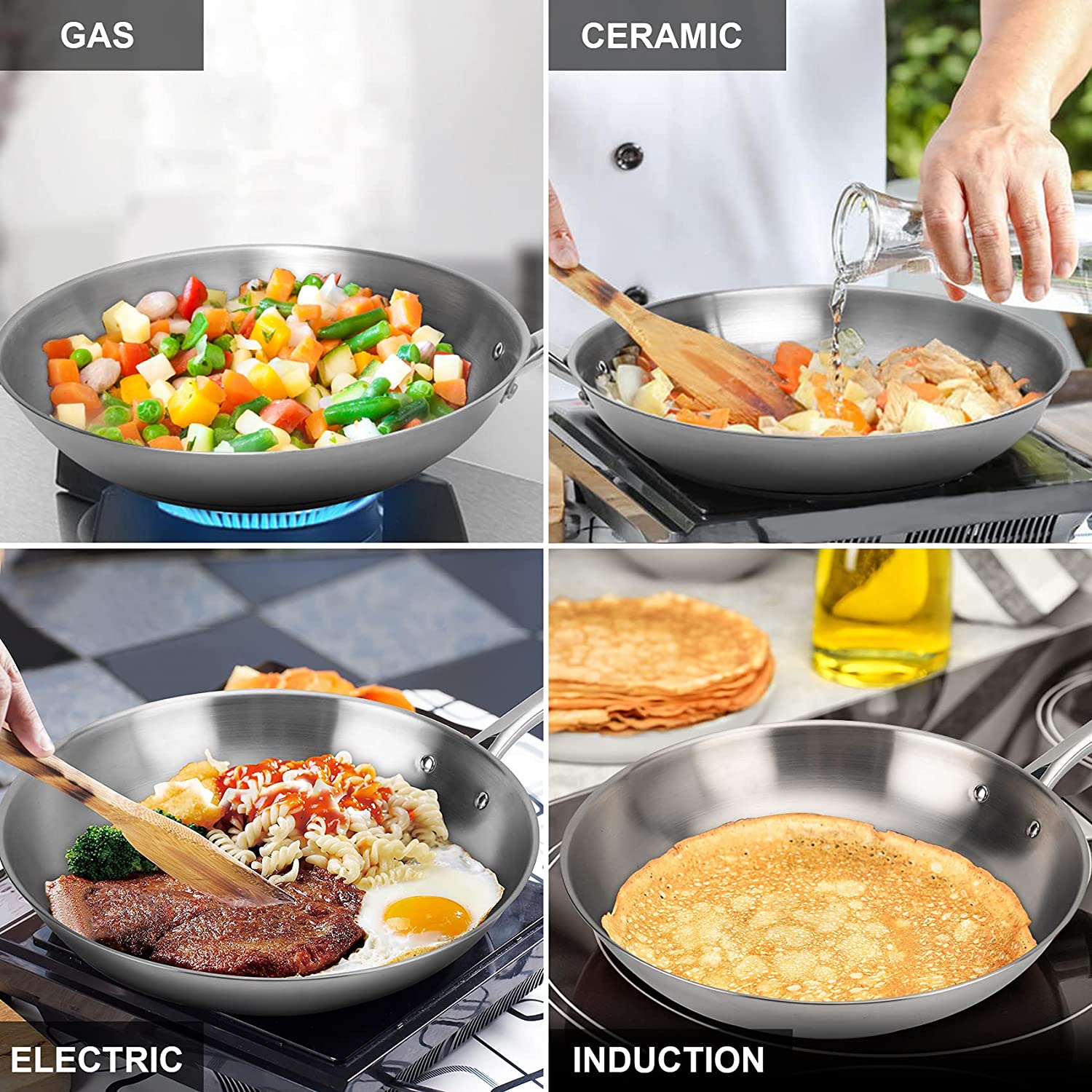
The 3-Piece Nonstick Cast Iron Frying Pans are integrally formed with a thick bottom and thin walls, making them less bulky than traditional iron pans and resistant to deformation. Plus, with your choice of a stylish wooden or sleek stainless steel handle, these pans not only perform great, but look great too!
The Differences Between Skillets and Pans
The noticeable difference between them is shape. Yes, a skillet will feature curved and shorter sides. However, a sauté pan will have vertical and straight sides. Apart from that, skillets will have flared rims. They offer an open and spacious view. Hence, you can conveniently flip, move, or stir the ingredients. Also, you can move food from your skillet to plates smoothly. But there will be a few downsides.
The cooking surface of skillets will be only ten inches for 12 inches of product. Hence, foods in the curved edges will not get direct heat contact. As a result, it might take longer to prepare your food. But, the wide opening will ensure easy maneuvering. You can shift the food from the edges to the surface to get direct heat.
When it comes to pans, the sides will get direct heat. The credit goes to their flat and even bottoms. The pans will have a large surface and defined edges. As mentioned earlier, the cooking surface of skillets will be ten inches. But the pans will have twelve inches cooking surface. Hence, you can expect equal heat distribution. Also, the tall sides of a pan will enable it to hold more liquid than skillets. Therefore, you will have minimal spillovers while using pans.
As pans come with a spacious base and tall sides, they are heavier than skillets. Also, large pans feature a secondary handle to ensure easy usage. However, large 12 inch stainless steel pans are hard to move due to their size and weight.
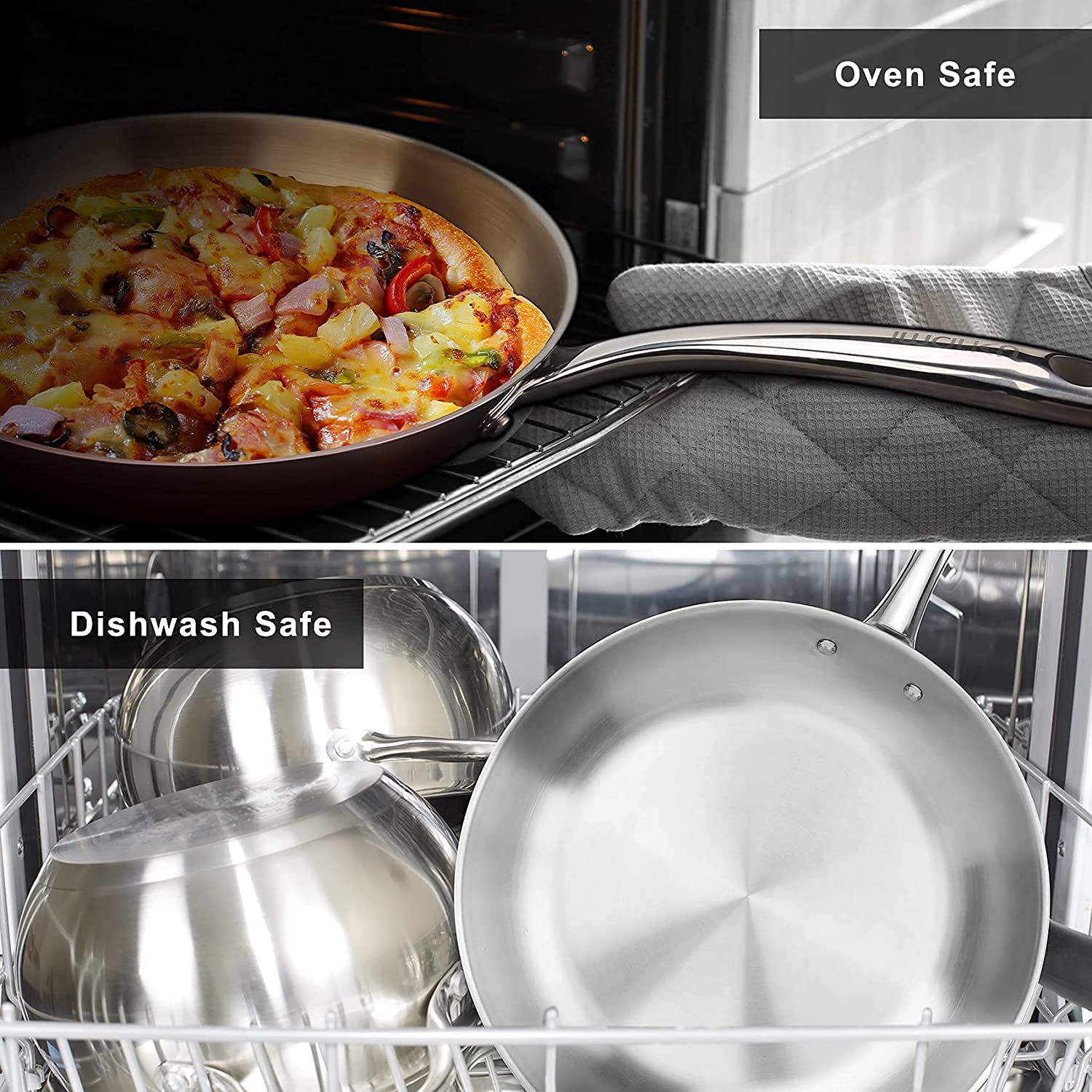
Considerations for Buying a Skillet or Pan
Now, you know the differences between these two types of cookware. Next, we will cover the buying considerations that you can go through regardless of the type.
Material
Both pans and skillets can be the best for everyday use. Hence, you will have to ensure that the product is well made and durable. Pans and skillets are available in different materials. A few of them are ceramic, nonstick, stainless steel, and cast iron material.
If you want cookware for everyday cooking, you can consider five-ply or three-ply combinations. You can choose stainless steel or aluminum. The stainless steel material will offer a durable surface. Besides, you can expect enhanced safety and excellent heat retention. Also, aluminum will help with even heat distribution. This combination can help with the best outcome.
Handle Design
You will have to consider the design of the handle. If the handle is uncomfortable, you cannot hold it for a long time. As a result, you will experience difficulties while stirring or cooking. Hence, make sure that your cookware has a secure and stay-cool handle.
Size
Pans and skillets are available in different sizes. You will find them in sizes ranging between 3.5-inch and 17-inch diameters. However, the most used ones are eight inches, ten inches, and twelve inches. It is worth mentioning that the cooking surface of skillets will be a few inches less than the mentioned size.
However, the pans will have a similar bottom. If it measures 12 inches, the pan’s bottom will be 12 inches. But if the skillet’s size is 12 inches, the cooking surface will be 10 inches only. You will have to consider this factor while making a purchase.
You can choose a size based on your cooking needs and preference. You can go with smaller sizes for quick bites and two persons’ meals. However, the large size can be an ideal choice for your entire family.
Both pans and skillets can be perfect cooking tools. You will have to know the differences to ensure the right and easy usage. You can have both these types to meet different cooking needs. Skillets can help with easy stirring, and pans can cook high volumes of foods.
Usage
Skillets are lightweight and easy to shake. Also, they feature sloped sides. That will redistribute your food back to the bottom. Besides, its wide opening will enable you to stir the ingredients smoothly.
You can consider skillets for searing or pan-frying for a few servings of the meat. You can use these tools for foods that need constant flipping or stirring.
When it comes to pans, they are versatile. Pans can hold more liquid, and you can use these tools for pan-frying, searing, shallow-frying, poaching, and braising. In brief, you can prepare any food that does not require flipping. Also, you can use sauté pans for large and long cooking. Learn a specific instruction on buying a fry pan.


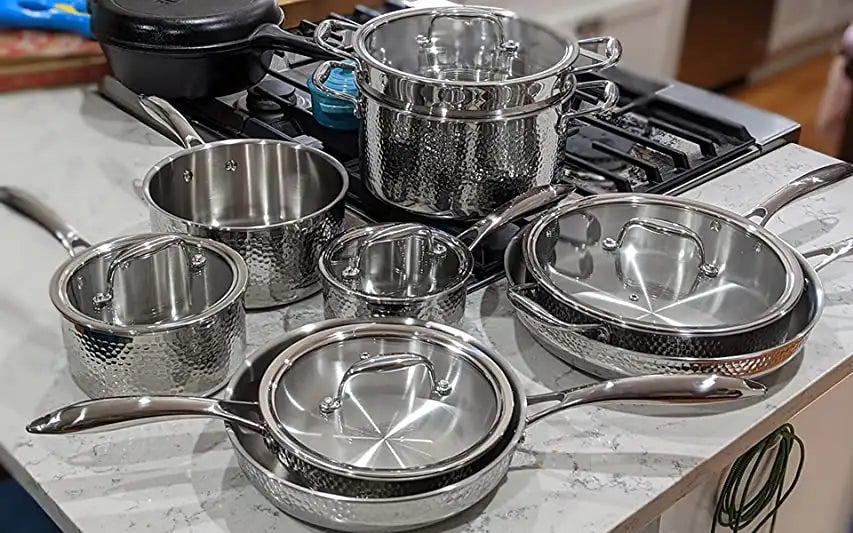
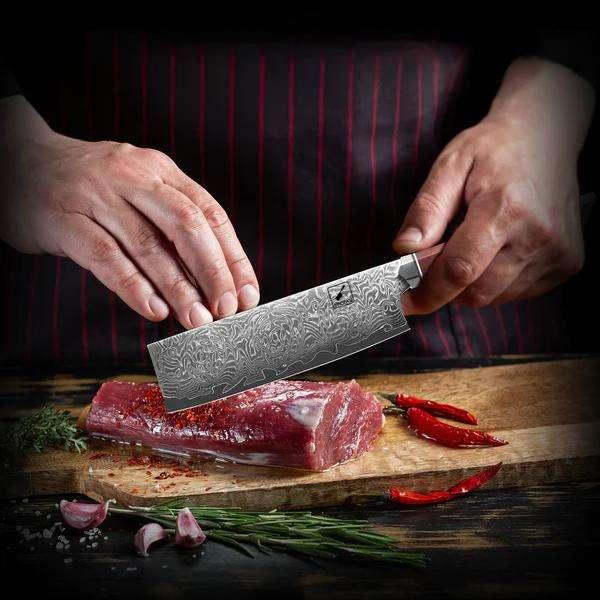
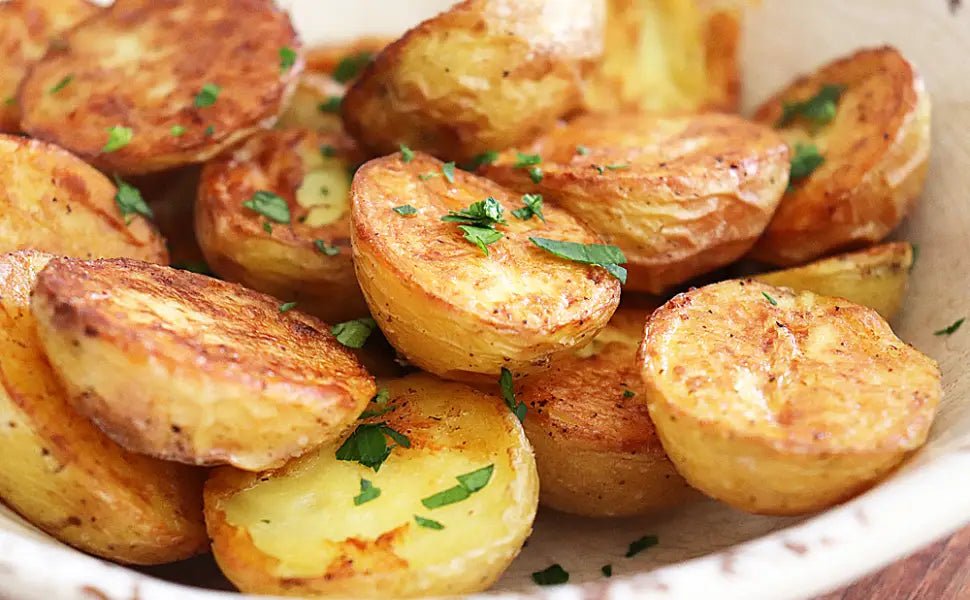

















Leave a comment
All comments are moderated before being published.
This site is protected by hCaptcha and the hCaptcha Privacy Policy and Terms of Service apply.